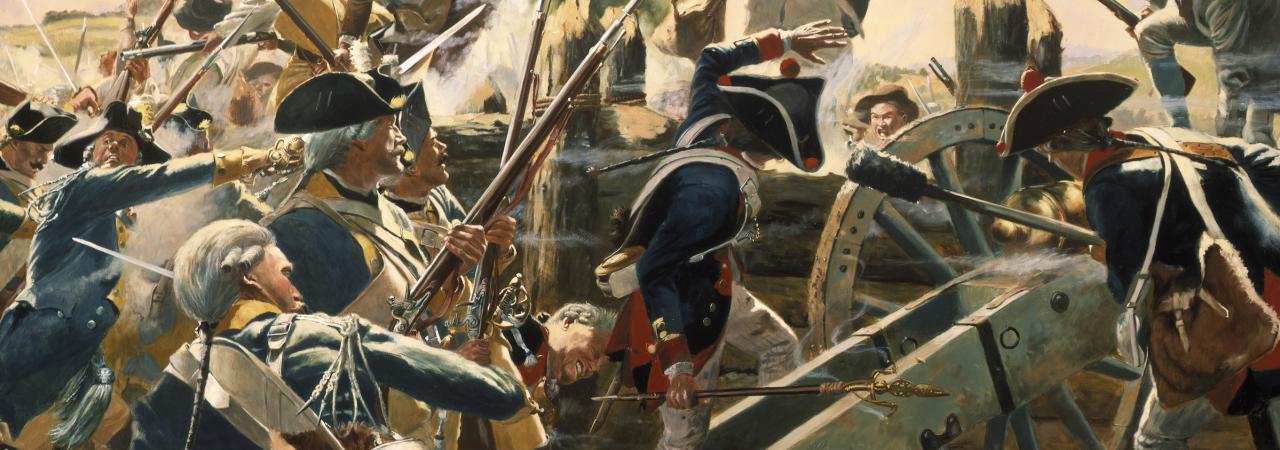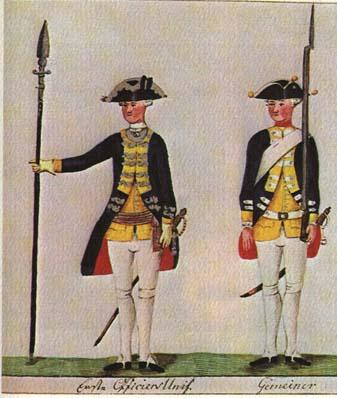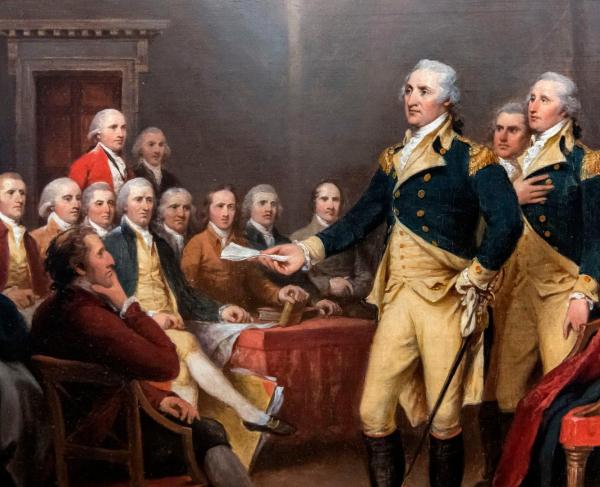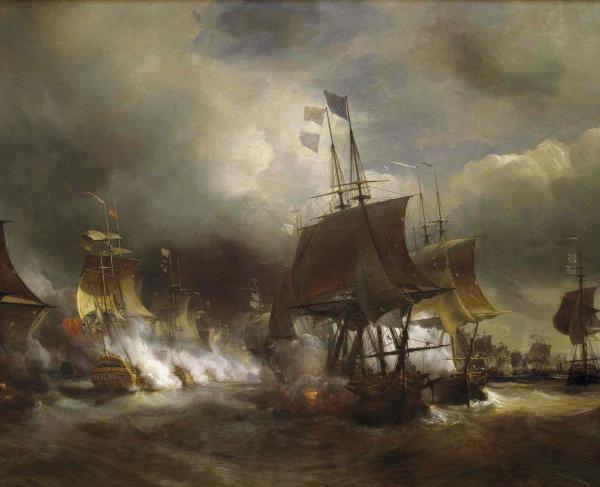
The Battle of Bennington, a National Guard Heritage Painting by Don Troiani, courtesy the National Guard Bureau.
The Hessians were an important part of the Revolutionary War, but who were the Hessians, and why were these German soldiers fighting for the British?
In the eighteenth century, Germany was not a unified nation as we know it today; instead, various smaller Principalities, Duchies, and Counties were loosely organized under the declining Holy Roman Empire. Friction between various states resulted in a feudal-like society, complete with power struggles and internal warfare. German unification finally came a century later, in 1871.
Conflicts within the German states, and with the other European powers, created a body of well-trained and experienced soldiers, but hurt the feudal economy. To alleviate this, the princes of the small German states often hired out their armies to supplement their income. German troops saw combat during the War of Spanish Succession from 1701-1714 fighting for Prince Eugene of Savoy (Italy) and during the Jacobite Rebellion in 1715 fighting for Great Britain under George I. In perhaps the best example of the peculiarities of the German states, during the War for Austrian Succession, 1740-1748, German troops fought on both sides, some hired by Great Britain and others by France.

When the war clouds of the American Revolution began to gather, Great Britain turned to the German states to provide much needed manpower. After the Seven Years War (French and Indian War), Britain demobilized in order to alleviate the massive debt caused by the war. Many of these budget cuts came from the army in order to maintain the powerful navy that Britain relied on to protect its empire. When the Revolution began, Britain needed trained soldiers to fight not only in North America, but also throughout its empire.
In North America, the German troops are often referred to as “Hessian Mercenaries,” but this is somewhat of an inaccuracy. Great Britain hired 34,000 German soldiers, of which more than half, 18,000, were from the Principality of Hesse-Kassel, which resulted in all German soldiers being generalized as “Hessians.” The remaining soldiers were from states such as Anhalt-Zerbst, Anspach-Beyreuth, Brunswick, Hannover, Hesse-Hanau, and Waldeck.
The term “Mercenary” is also misleading. In the modern sense, mercenary implies a soldier for hire who makes a large amount of money from their service. The German soldiers had no choice; they were still in the army of their prince, who had decided to rent their services to a foreign power without the individual soldier’s approval. While the German troops were well paid, they did not receive any bonuses for service with Great Britain.
German troops served throughout the Revolution, and were both feared and admired for their discipline and ferocity. German troops played important roles in many battles, but are most famous for their service in the northern theater. At White Plains, Hessians under Leopold Philip de Heister hammered the American lines until they broke. At Fort Washington, Hessians under Wilhelm von Knyphausen overran the American defenders. Knyphausen gave the honor of requesting the American surrender to Colonel Johann Rall. Colonel Rall later commanded the Hessian garrison at Trenton that was defeated and captured, with Rall himself mortally wounded.
There were Brunswick troops with Burgoyne at Saratoga, and troops from Hesse and Anspach-Bayreuth with General Howe during the Philadelphia Campaign. Germans did see limited action in the south. Hessians were at the Siege of Charleston, and Hessian and Anspach-Bayreuthian regiments surrendered with Cornwallis at Yorktown.
Many of the Germans who were captured during the war were held around Lancaster, Pennsylvania. The area was ideal because of its Distance from the fighting, and large German-speaking population.
Between 40 and 50 percent of the German troops did not return home. Many of these were casualties, but some chose to stay in the United States, drawn by the opportunity and freedom offered by the new nation.
Without the added strength of the German troops, the British war effort would have been seriously hampered. In addition to fighting in North America, German troops saw action in other parts of the British Empire, most notably Hanoverian troops at the Great Siege of Gibraltar. The “Hessians” are a critical part of the American Revolution, and understanding their history gives us a better understanding of the entire war.
Related Battles
5
905
217
233
330
1,135
155
458


